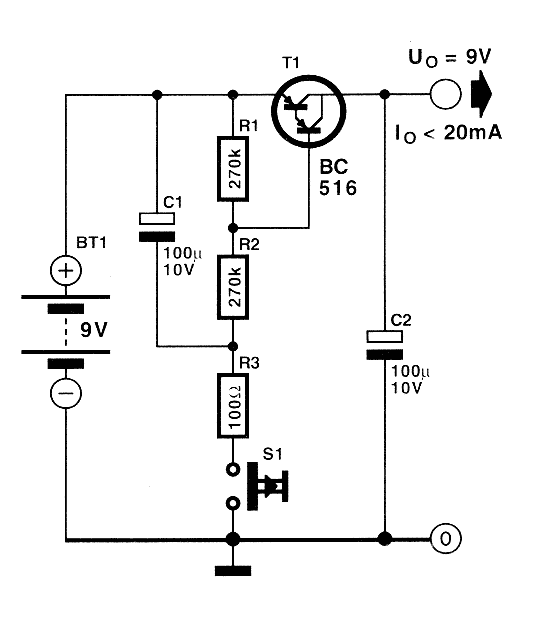
| Statistics |

Total online: 1 Guests: 1 Users: 0 |
|
 | |  |
| | Home » Power » Automatic switch for batteries
22:04 Automatic switch for batteries |

Nowadays the batteries are gaining more and more power, being the only components that fail to provide energy for portable electronic devices. The evolution is rapid, leading manufacturers electronic equipment to attempt to minimize the consumption of their products so that they can operate for several hours using simple batteries trade. In spite of the efforts of manufacturers, the device will absorb a zero power not yet invented. Thus, both small and if the current device is mathematically certain that at some point, after a few hours, days or ethdomades, the battery-drain . The purpose of the circuit will describe below, is to keep 'alive' batteries for the maximum time, minimizing unnecessary consumption. 
Taking a brief look at the circuit, you notice that the few parts that are can be integrated into any device powered by a battery of 9 V. The main trait is that allows current to flow to the load for a minute, since you pressed the switch S1.
After this time automatically cuts off the battery connection. The peak current during switching is 20 mA, price satisfactory for most devices that work with batteries, this nominal voltage.
The heart of the construction is a Darlington type transistor PNP (T1), which is driven in a state of conduction through the pressing switch S1. The small current thaoio, which is due to the high rate of aid, makes able to remain in this condition even for relatively small values ??of the capacity of capacitor C 1 (Around 100 MF).
The resistance A3 limits the charge current of the capacitor, thus ensuring long life pressing the switch. Resistance A1 and A2, in conjunction with the capacitor C 1, determine the period allowed to flow, flow to the load. After this time, the T1 is driven in the state cutoff, a condition ensured by R1.
In this design, the placement of a diode to protect from any reverse polarity would be an unnecessary luxury, since the maximum reverse voltage that can accept darlington between thasis and emitter (UBE) is equal to 10 V.
|
|
Category: Power |
Views: 1211 |
|
| |
 | |  |
|
|
| |





